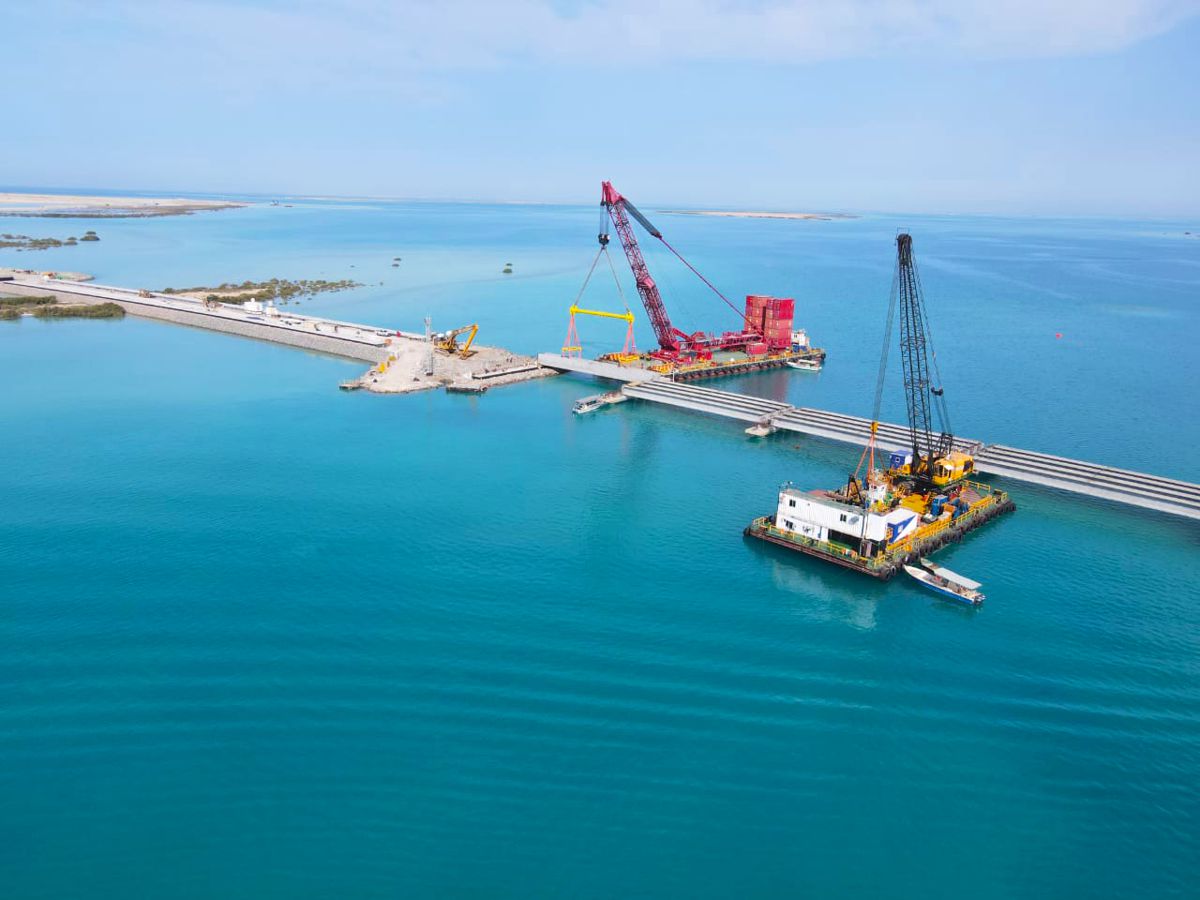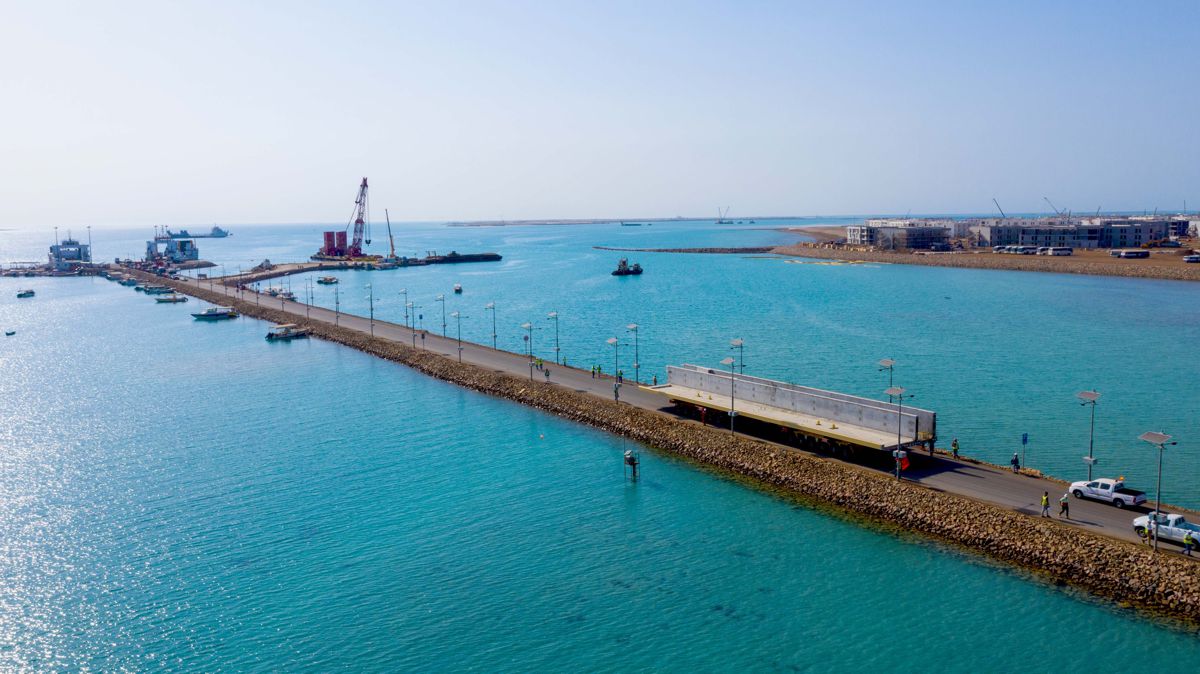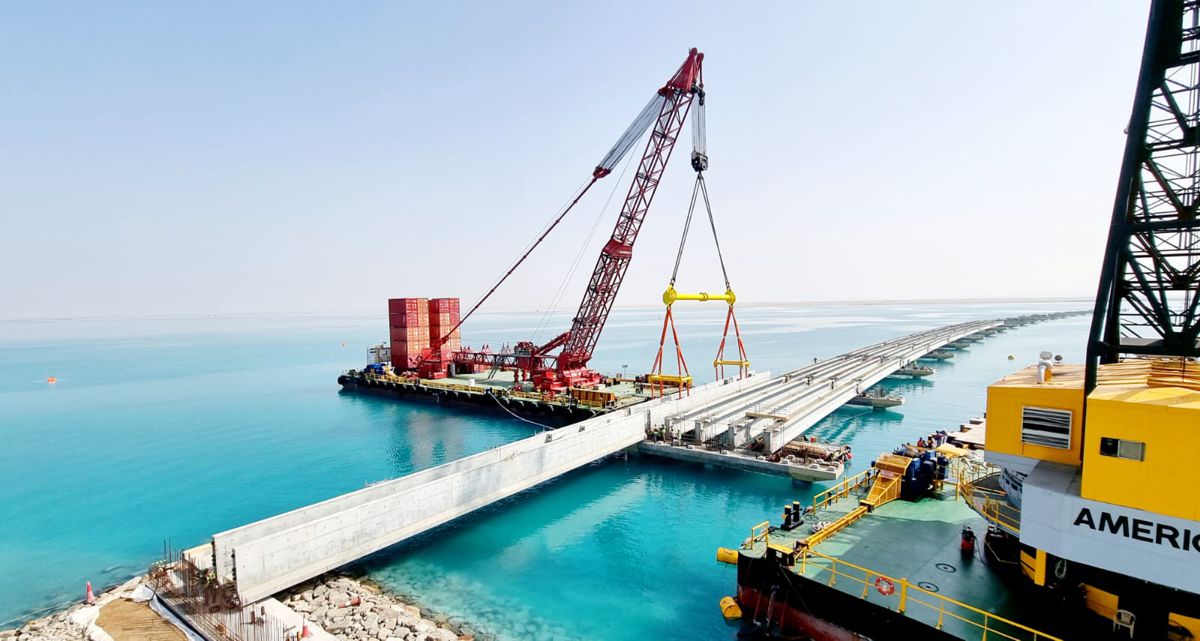Mammoet’s Barge Crane innovation enables Red Sea Bridge Project
Mammoet’s MTC 15 on a barge creates 500t capacity containerised sheerleg for the Red Sea Project’s Shurayrah island bridge installation work.
Saudi Arabia’s Red Sea Project is the world’s most ambitious and exciting tourism and hospitality project – a luxury destination created around one of the world’s last hidden natural treasures.
Led by the Red Sea Development Company (TRSDC), the project is located on Saudi Arabia’s west coast, between the cities of Umluj and Al-Wajh, and sits over 28,000 km2 of pristine lands and waters, including a vast archipelago of more than 90 islands. Its main island – a dolphin shaped Shurayrah Island, will be the gateway to The Red Sea Project, setting the standard for ground-breaking architecture and sustainable design. Shurayrah Bridge will become one of the main access points for guests onto the island.
TRSDC has appointed Archirodon, a marine contracting specialist to design and build the iconic bridge to the Shurayrah island. The bridge will stretch a total of 1.2km and will connect the island to the mainland. A precast yard for bridge sections has been established near the coast to minimise travel distances with concrete sourced from on-site batching plants.
To handle the transportation and installation of 60 pre-cast bridge-beam and edge-beam segments onto piers Archirodon reached out to Mammoet. Initially, the customer was looking at installing the bridge sections by SPMTs on a barge with the help of SPMT’s suspension cylinders to lift and then lower the pre-cast segments on the bridge bearings.

However, having studied the project in more detail, Mammoet’s engineering team proposed an alternative installation method by using Mammoet’s mobile floating crane concept: MTC 15 crane positioned on a barge, thereby creating a 500t capacity containerized floating sheer leg with an outreach of 30m. This installation method would provide significant time savings to the client as it will allow them to build the bridge faster by installing one section a day instead of one in two days, and provide more flexibility and accuracy to the operation.
The MTC 15 comes in standard shipping containers and can be easily shipped to any port, then assembled and erected in a matter of days. Archirodon’s 210-class barge with a suitable deck load was available at the site, this minimized the costs associated with mobilization of a new barge, and reduced the environmental harm by using readily available local resources.
The MTC 15 was shipped to the Port of Yanbu, where it was swiftly assembled on the barge and then sailed to the project site in Umluj, where its boom was then raised, ready to lift the 400t bridge sections.

The process
At the pre-cast yard Mammoet’s SBL1100 hydraulic gantry, a four-point lifting system, lifts a section and safely places it onto SPMTs for the transport to a new temporary jetty. At the jetty, the MTC-15 crane on the barge then lifts the segment from the trailers, places the segment on the bow while on hook and then floats off to the installation area. Once at the location the segment is skilfully placed onto bearings on crossheads of piers and the floating crane returns for the next section to repeat the process.
“The combination of creative engineering with a flexible innovative equipment enables Mammoet to offer this unique tailor-made solution for the customer that saved significant time. Moreover, the decreased handling time made this method of operation safer and eliminated the need to build an additional temporary infrastructure. Our collaboration with the client optimized the overall project schedule and ultimately kept the customer’s budget” commented Abdul Rouf, Manager Sales Mammoet Saudi Arabia.
Jacques Stoof, Mammoet’s Global Director Market Development and Innovation said: “We always work closely with the customers to listen and understand their requirements to be able to offer the most efficient solutions. MTC 15 on a barge or a containerized floating sheer leg is a testament to that as it provides a simple yet effective way to lift heavy loads, both inland and in coastal waters and can be perfectly suitable to any civil project, on any local river or a lake.”

Sustainability is at the heart of The Red Sea Project, from design and architecture through to construction, operations and destination management. All transport and installation works are performed during the daylight hours in order to protect a sensitive marine habitat. The MTC 15 has also been constructed by reapplying parts from previous cranes, reducing its environmental footprint. Using sand or water on-site for ballast reduces environmental impacts further.
Upon completion in 2030, the Red Sea Project will comprise 50 hotels, with up to 8,000 hotel rooms and around 1,300 residential properties across the 22 islands and six inland sites. The development will establish a world-class resort that attracts domestic and international tourists to experience Saudi Arabia’s untapped riches, unlocking new opportunities in the Kingdom’s tourism sector. It will set new standards in regenerative tourism and with sustainable development at its core, supporting infrastructure emphasizes renewable energy and water conservation and re-use.



















